Midwater Fishes
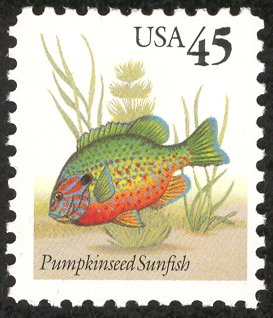
Freshwater gamefish such as trout and bass may not be taken by spear by divers. However, in some places, it may be legal to spearfish for carp, catfish, suckers, and other "rough" fishes - check local regulations.
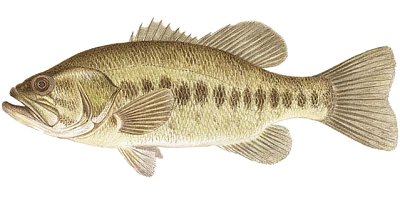
Micropterus salmoides
Size
to 38"
This is an introduced species in New Jersey, although it occurs in regions all around. Largemouth bass at Dutch Springs are as tame as dogs, and will follow you around hoping for handouts, as long as you don't spook them. If you don't happen to have anything to feed them, a good way to keep their interest is to flip over rocks on the bottom, exposing tasty little crayfish and other treats that the bass will go right after.
More: Largemouth Bass ...
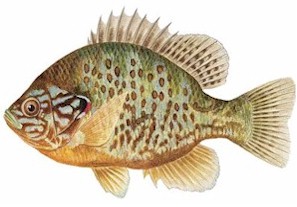
Sunfishes ( family Centrarchidae, along with freshwater basses ) thrive in small, shallow lakes, sheltered bays of larger lakes, and quiet areas of slow-moving streams. Pumpkinseeds (right) are normally found in shallower water and denser vegetation than Bluegills and Redears. Adult and larval insects make up most of the diet, but sunfishes also eat snails and fish fry.
More: Pumpkinseed Sunfish ...
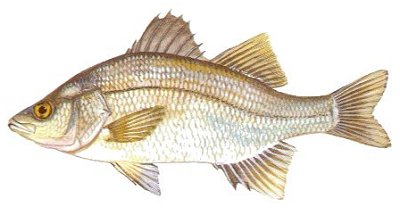
Morone americana
Size
to 19"
usually 8" - 10 "
The pale olive to silvery green sides of the White Perch lack the dark horizontal stripes present on other temperate basses. White perch also have a narrower tail. The deepest part of the body is at the front of the dorsal fin. On a white bass, the deepest part is near the middle of the back. Known to hybridize with Striped Bass. White Perch are actually members of the Temperate Bass family, not perch at all.
More: White Perch ...
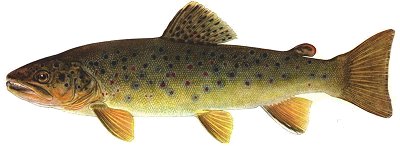
Salmo trutta
Size
to 41"
Although not native to North America, the widely-introduced European Brown Trout is the most common trout in our area. It thrives in poorer water conditions than native species. Salmon are very similar to trout but generally larger. Introduced from Europe to much of the United States during the late 1800s, the brown trout has adapted well, tolerating warmer water than the native brookie. Sides have a light brown or yellow cast with black spots and usually some orange or red spots. The spots often have whitish to bluish halos. The tail generally lacks spots but may have a few.
More: Brown Trout ...
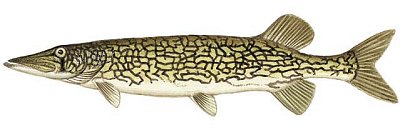
Esox niger
Size
to 39"
Eastern or 'Chain' pickerels are deep olive-green on the back, shading to a creamy yellow on the belly. Olive green blotches are present within distinct black chain-like or interwoven markings on the sides. There is a distinct dark, vertical bar below the eye. The cheek and gill covers are completely covered by scales. The underside of the lower jaw has 14-17 branchiostegal rays. There are no recognized subspecies. However, they hybridize readily with redfin pickerels. They are distantly related to trout and salmon.
More: Eastern Pickerel ...
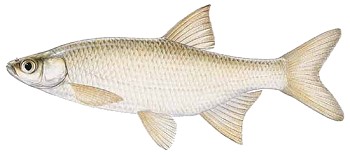
Notemigonus crysoleucas
Size
to 12"
usually much smaller
There are hundreds of species of shiners in North America, and dozens in New Jersey. The Golden Shiner is probably the most attractive of these minnows in our area, although only the male wears these colors, and then only when breeding. Otherwise, they are much drabber. Shiners prefer quiet or slowly flowing waters.
More: Golden Shiner ...
- Midwater Fishes ...
- Bottom Fishes ...
- Shellfish ...
- Insects ...
- Plants ...
- Reptiles & Amphibians ...
- Birds ...
- Freshwater Mammals ...
More: Freshwater ...

